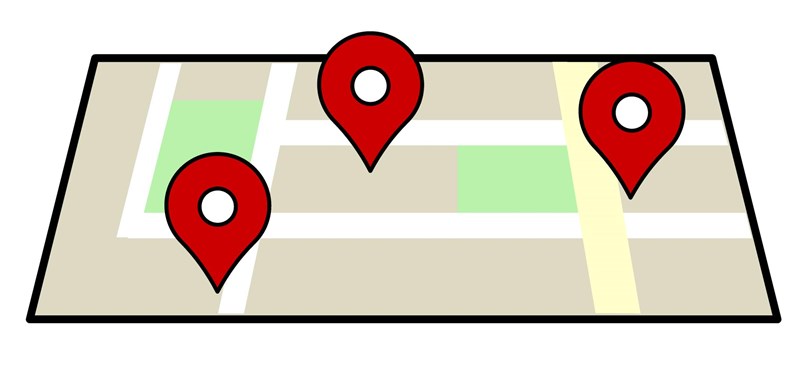[{“available”:true,”c_guid”:”1fcda308-8cff-4931-bff1-25b0a1768b3d”,”c_author”:”hvg.hu”,”category”:”vilag”,”description”:”Attilának a „női munkatársak testi épsége” lebegett a szeme előtt. “,”shortLead”:”Attilának a „női munkatársak testi épsége” lebegett a szeme előtt. “,”id”:”20211007_Bors_fegyveres_tamadas”,”image”:”https://img3.hvg.hu/image.aspx?id=1fcda308-8cff-4931-bff1-25b0a1768b3d&view=ffdb5e3a-e632-4abc-b367-3d9b3bb5573b”,”index”:0,”item”:”e8bcaf21-a565-433f-bf5a-199ce3c7d22e”,”keywords”:null,”link”:”/vilag/20211007_Bors_fegyveres_tamadas”,”timestamp”:”2021. október. 07. 08:20″,”title”:”Bors: Fegyveres támadást akadályozott meg egy magyar férfi Ausztriában”,”trackingCode”:”RELATED”,”c_isbrandchannel”:false,”c_isbrandcontent”:false,”c_isbrandstory”:false,”c_isbrandcontentorbrandstory”:false,”c_isbranded”:false,”c_ishvg360article”:false,”c_partnername”:null,”c_partnerlogo”:”00000000-0000-0000-0000-000000000000″,”c_partnertag”:null},{“available”:true,”c_guid”:”8e6317d1-ca92-4b7e-94dd-2a60ab78a312″,”c_author”:”Nagy Iván László, Lengyel Tibor, Windisch Judit”,”category”:”360″,”description”:”Lefutott partinak tűnt Karácsony Gergely és Márki-Zay Péter alkudozása arról, melyikük lép vissza az ellenzéki előválasztás második fordulója előtt a másik javára, aztán jött pár makacskodás és két közvéleménykutatás, és minden borult, lassan a figurákat dobálták le a tábláról. Ki hogy taktikázott, ki hogy kommunikált, ki lehet a nagy vesztes, és ki a meggyengült győztes? “,”shortLead”:”Lefutott partinak tűnt Karácsony Gergely és Márki-Zay Péter alkudozása arról, melyikük lép vissza az ellenzéki…”,”id”:”20211006_Karacsony_kemenykedik_MarkiZay_lekezelo_de_mi_van_ha_senki_nem_rantja_felre_a_kormanyt”,”image”:”https://img3.hvg.hu/image.aspx?id=8e6317d1-ca92-4b7e-94dd-2a60ab78a312&view=ffdb5e3a-e632-4abc-b367-3d9b3bb5573b”,”index”:0,”item”:”711fd97c-1c45-4ba3-b90a-bcc599a2b35b”,”keywords”:null,”link”:”/360/20211006_Karacsony_kemenykedik_MarkiZay_lekezelo_de_mi_van_ha_senki_nem_rantja_felre_a_kormanyt”,”timestamp”:”2021. október. 06. 19:16″,”title”:”Karácsony hirtelen határozott lett, Márki-Zay kioktató, de mi van, ha senki nem rántja félre a kormányt?”,”trackingCode”:”RELATED”,”c_isbrandchannel”:false,”c_isbrandcontent”:false,”c_isbrandstory”:false,”c_isbrandcontentorbrandstory”:false,”c_isbranded”:false,”c_ishvg360article”:true,”c_partnername”:null,”c_partnerlogo”:”00000000-0000-0000-0000-000000000000″,”c_partnertag”:null},{“available”:true,”c_guid”:”b2bbacbe-e9eb-41d7-8dec-6ee1e4e0f18c”,”c_author”:”MTI”,”category”:”vilag”,”description”:”A terrorszervezethez korábban csatlakozó nyolc nő térhetett most haza gyerekeivel. “,”shortLead”:”A terrorszervezethez korábban csatlakozó nyolc nő térhetett most haza gyerekeivel. “,”id”:”20211007_ia_hozzatartozok”,”image”:”https://img3.hvg.hu/image.aspx?id=b2bbacbe-e9eb-41d7-8dec-6ee1e4e0f18c&view=ffdb5e3a-e632-4abc-b367-3d9b3bb5573b”,”index”:0,”item”:”b16bb456-b616-4c67-8889-bfd8c85dd768″,”keywords”:null,”link”:”/vilag/20211007_ia_hozzatartozok”,”timestamp”:”2021. október. 07. 05:20″,”title”:”Az Iszlám Állam korábbi terroristáinak hozzátartozóit szállította haza Németország”,”trackingCode”:”RELATED”,”c_isbrandchannel”:false,”c_isbrandcontent”:false,”c_isbrandstory”:false,”c_isbrandcontentorbrandstory”:false,”c_isbranded”:false,”c_ishvg360article”:false,”c_partnername”:null,”c_partnerlogo”:”00000000-0000-0000-0000-000000000000″,”c_partnertag”:null},{“available”:true,”c_guid”:”c9b1253b-4dfa-4bfd-9bc2-d98ace39a5ba”,”c_author”:”MTI”,”category”:”tudomany”,”description”:”Rövid időn belül újra megfertőződhetnek koronavírussal azok, akik korábban kigyógyultak a koronavírus-fertőzésből, de aztán nem oltatták be magukat – derül ki egy friss tanulmányból.n”,”shortLead”:”Rövid időn belül újra megfertőződhetnek koronavírussal azok, akik korábban kigyógyultak a koronavírus-fertőzésből, de…”,”id”:”20211005_koronavirus_jarvany_fertozes_covid19_vedooltas_immunitas”,”image”:”https://img3.hvg.hu/image.aspx?id=c9b1253b-4dfa-4bfd-9bc2-d98ace39a5ba&view=ffdb5e3a-e632-4abc-b367-3d9b3bb5573b”,”index”:0,”item”:”25296f96-6758-4e14-a4a1-8457ee64580c”,”keywords”:null,”link”:”/tudomany/20211005_koronavirus_jarvany_fertozes_covid19_vedooltas_immunitas”,”timestamp”:”2021. október. 05. 12:59″,”title”:”Covidos volt, és az immunitásban bízik? Gondolja át!”,”trackingCode”:”RELATED”,”c_isbrandchannel”:false,”c_isbrandcontent”:false,”c_isbrandstory”:false,”c_isbrandcontentorbrandstory”:false,”c_isbranded”:false,”c_ishvg360article”:false,”c_partnername”:null,”c_partnerlogo”:”00000000-0000-0000-0000-000000000000″,”c_partnertag”:null},{“available”:true,”c_guid”:”e6c2087e-b0fc-41c0-aa7c-43dc65b7ed64″,”c_author”:”hvg.hu”,”category”:”cegauto”,”description”:”Egyre több ügyfél hajlandó elektromos autót vásárolni, és ezt érdemes meglovagolnia minden cégnek.”,”shortLead”:”Egyre több ügyfél hajlandó elektromos autót vásárolni, és ezt érdemes meglovagolnia minden cégnek.”,”id”:”20211005_A_felvezetohiany_miatt_most_a_dragabb_elektromos_autokat_is_konnyen_eladjak_a_gyartok”,”image”:”https://img3.hvg.hu/image.aspx?id=e6c2087e-b0fc-41c0-aa7c-43dc65b7ed64&view=ffdb5e3a-e632-4abc-b367-3d9b3bb5573b”,”index”:0,”item”:”1ed1ae7e-7ac8-4142-b158-fbc6c41c3107″,”keywords”:null,”link”:”/cegauto/20211005_A_felvezetohiany_miatt_most_a_dragabb_elektromos_autokat_is_konnyen_eladjak_a_gyartok”,”timestamp”:”2021. október. 05. 10:10″,”title”:”A félvezetőhiány miatt most a drágább, elektromos autókat is könnyen eladják a gyártók”,”trackingCode”:”RELATED”,”c_isbrandchannel”:false,”c_isbrandcontent”:false,”c_isbrandstory”:false,”c_isbrandcontentorbrandstory”:false,”c_isbranded”:false,”c_ishvg360article”:false,”c_partnername”:null,”c_partnerlogo”:”00000000-0000-0000-0000-000000000000″,”c_partnertag”:null},{“available”:true,”c_guid”:”7918ee88-4648-4ccc-bbb4-dca8c0bad487″,”c_author”:”HVG Extra Pszichológia”,”category”:”elet.pszichologiamagazin”,”description”:”A jól kitűzött életcélok boldogabb jövőt hoznak. De hogyan működik ez?”,”shortLead”:”A jól kitűzött életcélok boldogabb jövőt hoznak. De hogyan működik ez?”,”id”:”20211005_Elegedett_akar_lenni_Gondoljon_a_celjaira”,”image”:”https://img3.hvg.hu/image.aspx?id=7918ee88-4648-4ccc-bbb4-dca8c0bad487&view=ffdb5e3a-e632-4abc-b367-3d9b3bb5573b”,”index”:0,”item”:”52065d29-a939-417e-9554-437a0ed76dd1″,”keywords”:null,”link”:”/pszichologiamagazin/20211005_Elegedett_akar_lenni_Gondoljon_a_celjaira”,”timestamp”:”2021. október. 05. 13:15″,”title”:”Elégedett akar lenni? Gondoljon a céljaira”,”trackingCode”:”RELATED”,”c_isbrandchannel”:false,”c_isbrandcontent”:false,”c_isbrandstory”:false,”c_isbrandcontentorbrandstory”:false,”c_isbranded”:false,”c_ishvg360article”:false,”c_partnername”:null,”c_partnerlogo”:”00000000-0000-0000-0000-000000000000″,”c_partnertag”:null},{“available”:true,”c_guid”:”3a1a9279-6ad7-480a-aeb6-91c5898d8101″,”c_author”:”Kovács Gábor”,”category”:”360″,”description”:”Többszörösére nőtt az energiahordozó ára az ázsiai kereslet megugrása és Moszkva politikai játéka miatt, amit a hét elején aláírt magyar–orosz szállítási szerződés sem mérsékel.”,”shortLead”:”Többszörösére nőtt az energiahordozó ára az ázsiai kereslet megugrása és Moszkva politikai játéka miatt, amit a hét…”,”id”:”202139__elszallo_energiaarak__kulpolitikai_jatszmak__a_rezsikassza_negativba_fordul__utott_agazora”,”image”:”https://img3.hvg.hu/image.aspx?id=3a1a9279-6ad7-480a-aeb6-91c5898d8101&view=ffdb5e3a-e632-4abc-b367-3d9b3bb5573b”,”index”:0,”item”:”9d98e315-baf3-4aa0-a633-875a789e0eb6″,”keywords”:null,”link”:”/360/202139__elszallo_energiaarak__kulpolitikai_jatszmak__a_rezsikassza_negativba_fordul__utott_agazora”,”timestamp”:”2021. október. 05. 13:00″,”title”:”A magyar lakosságot is érinti az európai gázárak elszállása”,”trackingCode”:”RELATED”,”c_isbrandchannel”:false,”c_isbrandcontent”:false,”c_isbrandstory”:false,”c_isbrandcontentorbrandstory”:false,”c_isbranded”:false,”c_ishvg360article”:true,”c_partnername”:null,”c_partnerlogo”:”00000000-0000-0000-0000-000000000000″,”c_partnertag”:null},{“available”:true,”c_guid”:”3a66132b-0a02-4165-a1a3-f5e82baacb03″,”c_author”:”hvg.hu”,”category”:”gazdasag.ingatlan”,”description”:”A város szerint érdemi vizsgálat nélkül utasították el a kérelmüket, amit a projekt meghosszabbítása miatt nyújtottak be, az MTÜ úgy véli, a határidőkor még bele sem kezdett Szentendre a kivitelezésbe.”,”shortLead”:”A város szerint érdemi vizsgálat nélkül utasították el a kérelmüket, amit a projekt meghosszabbítása miatt nyújtottak…”,”id”:”20211005_szentendre_mtu_tamogatas_palyazat_strand”,”image”:”https://img3.hvg.hu/image.aspx?id=3a66132b-0a02-4165-a1a3-f5e82baacb03&view=ffdb5e3a-e632-4abc-b367-3d9b3bb5573b”,”index”:0,”item”:”0877e90e-732b-4ded-8209-eeae034f7237″,”keywords”:null,”link”:”/ingatlan/20211005_szentendre_mtu_tamogatas_palyazat_strand”,”timestamp”:”2021. október. 05. 15:50″,”title”:”Visszakéri Szentendrétől a felújításra szánt támogatást a turisztikai ügynökség”,”trackingCode”:”RELATED”,”c_isbrandchannel”:false,”c_isbrandcontent”:false,”c_isbrandstory”:false,”c_isbrandcontentorbrandstory”:false,”c_isbranded”:false,”c_ishvg360article”:false,”c_partnername”:null,”c_partnerlogo”:”00000000-0000-0000-0000-000000000000″,”c_partnertag”:null}]

The number of editorial boards independent of power is steadily declining, and those that do still exist are trying to stay afloat under growing headwinds. At HVG, we persevere and never give in to pressure, bringing local and international news every day.
That’s why we ask you, our readers, to support us! We promise to continue to give you the best we can!
Recommended from the first page










































